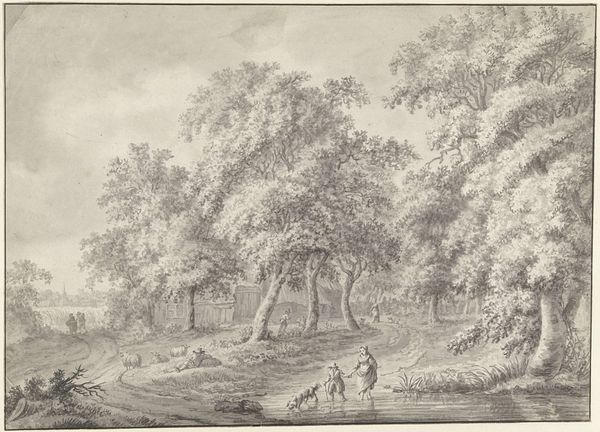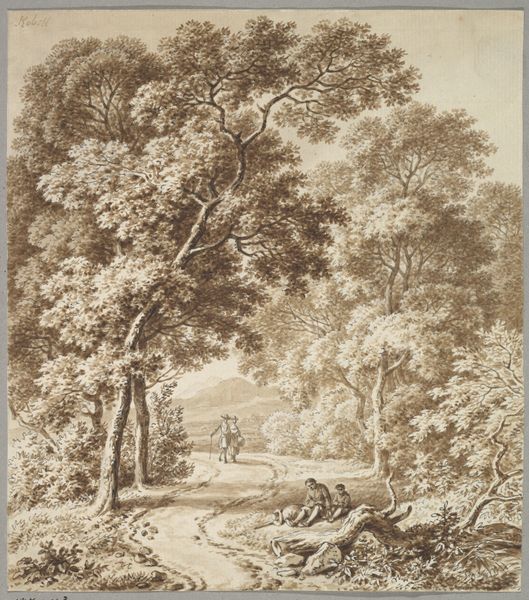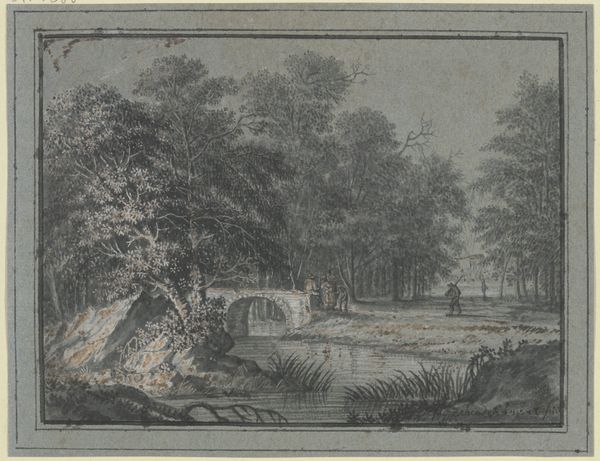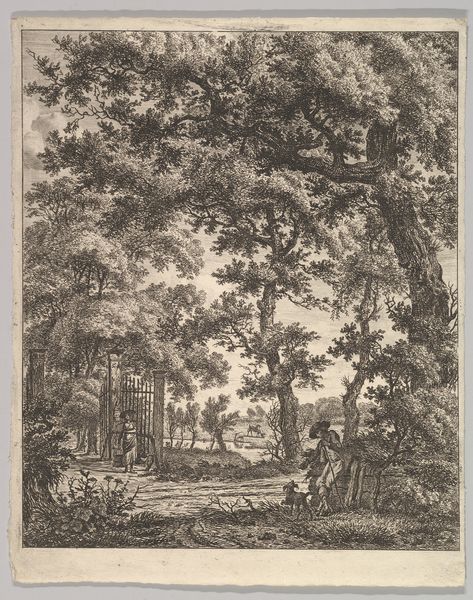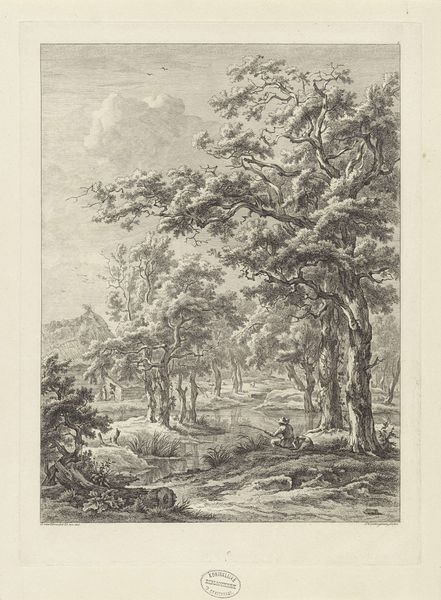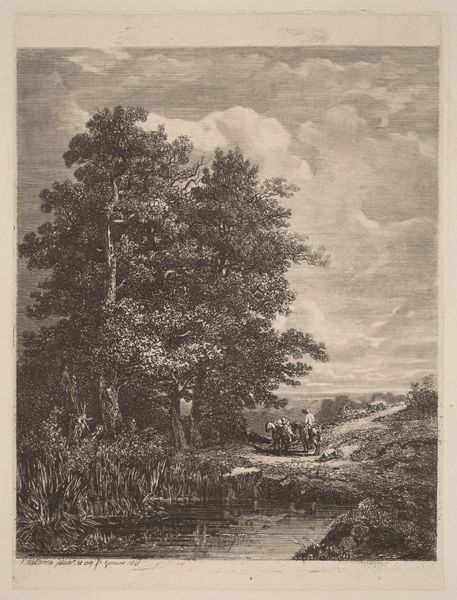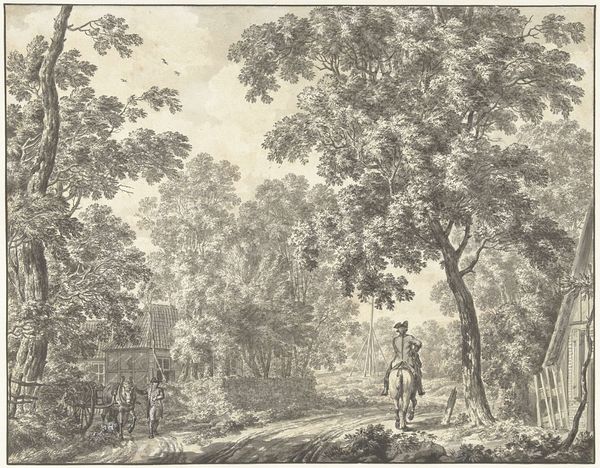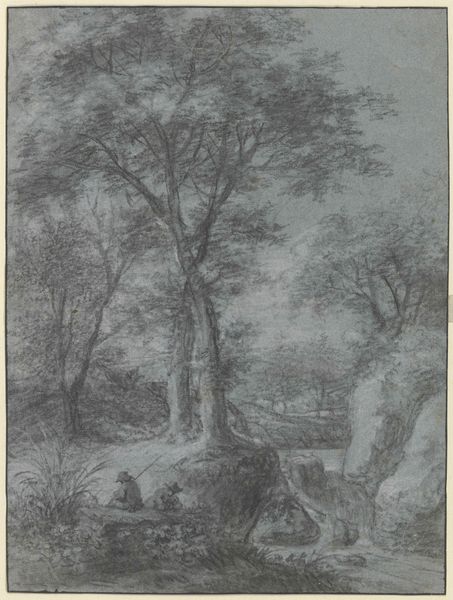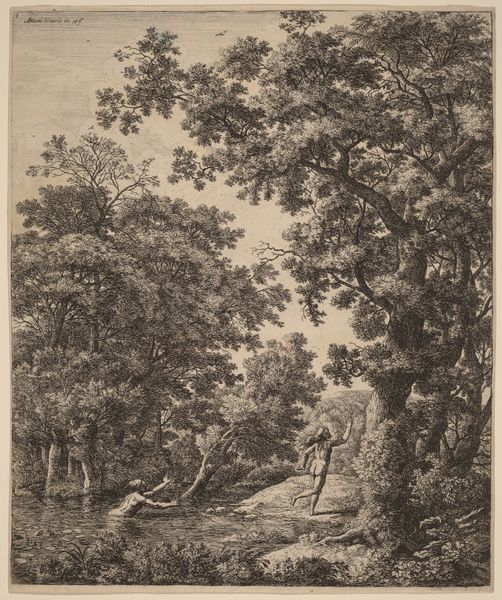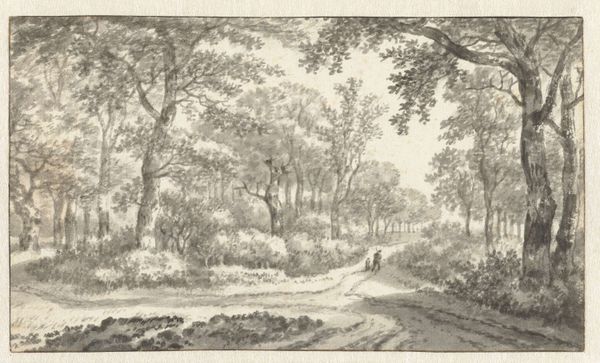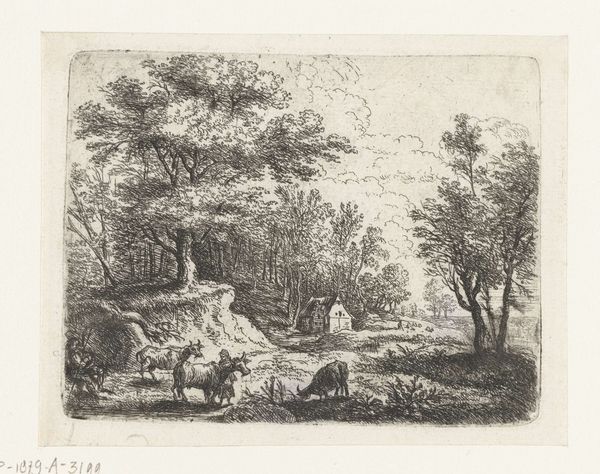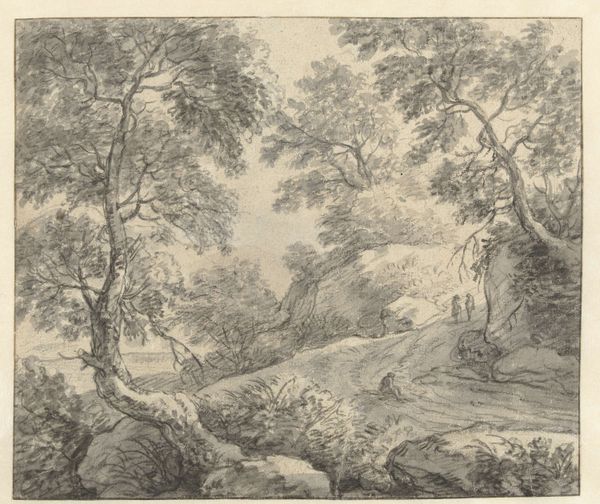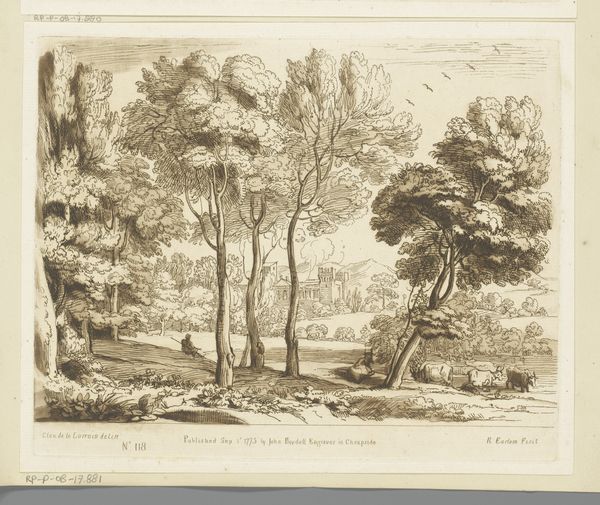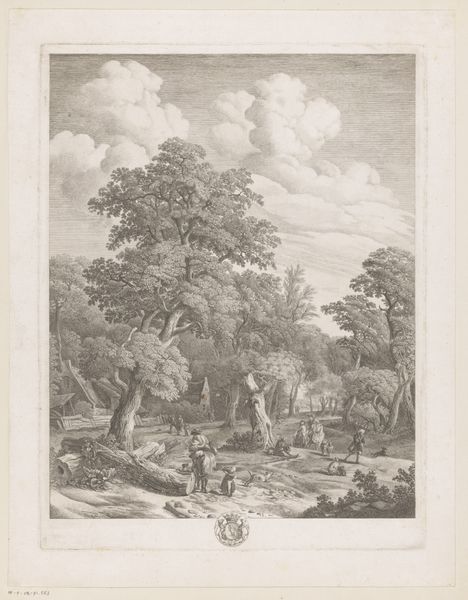
drawing, etching, paper, engraving
#
drawing
#
fairy-painting
#
etching
#
landscape
#
classical-realism
#
paper
#
genre-painting
#
nude
#
engraving
Dimensions: height 311 mm, width 255 mm
Copyright: Rijks Museum: Open Domain
Curator: This etching, titled “De badende juffers bespied” and made between 1760 and 1763 by Simon Fokke, depicts a rather pastoral scene. It’s currently held in the Rijksmuseum. Editor: It feels like stepping into a dream, doesn't it? The figures seem almost ethereal, fading into the light-dappled background. The composition itself draws my eye towards that central pool. Curator: Fokke's expertise with engraving and etching allowed for such detailed line work, building depth within the composition by meticulously layering lines, contributing significantly to the image's dreamy effect. Considering the historical context, prints like these would have served various functions, including circulating images and narratives. The presence of voyeuristic men peering out suggests a potential commentary on the culture's view of women. Editor: I notice how the lines define not only form but also texture, the subtle ripple of the water, the bark of the trees... It all contributes to a harmonious interplay of light and shadow. The nudity is striking and central to the theme. Curator: Absolutely. Fokke, primarily a printmaker, made his living producing these engravings. The artistic choices might reflect the taste of his clientele or current trends in theatrical and allegorical imagery, or even responding to specific societal tensions and sexual labor economies around images of women at the time. It raises questions about accessibility, consumption, and power dynamics, who controlled these images? Editor: Indeed. From a formal perspective, observe how Fokke uses the tree lines to guide the viewer's eye through the different planes of the composition, carefully balancing the figures against the vastness of the natural setting. Note the gaze. Curator: Precisely, each figure's relationship to labor, leisure, and observing all play with themes around work versus relaxation in society, as well as the economics behind imagery creation during the time of its making. Editor: Ultimately, Fokke has given us a delicate and thoughtful piece, even within the suggestive theme. The work stands as a testament to formal training, a classical perspective, and sensitivity toward pictorial harmony. Curator: Yes, the interplay of technique and context offers layers to consider about social narratives during the period of its production and circulation. Thank you.
Comments
No comments
Be the first to comment and join the conversation on the ultimate creative platform.
